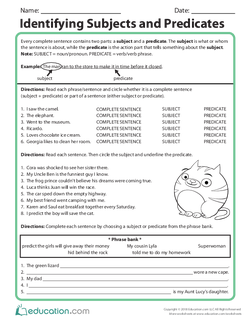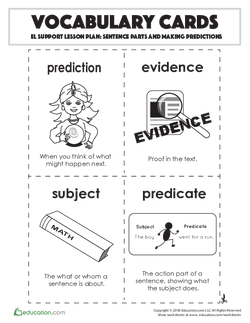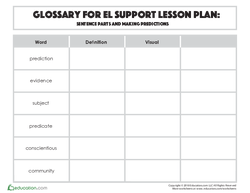- Worksheets
- Games
- Lesson Plans
- Workbooks
- Exercises
- Science Projects
- Skills Progression
- More
You are here:
Lesson Plan
Sentence Parts and Making Predictions
In this lesson, students will practice identifying the subject and predicate of a sentence and making predictions with textual evidence as they read short fictional texts. Use it as a stand alone lesson or as a precursor to What's Next?
Grade
Subject
View aligned standards
Objectives
Academic
Students will be able to make a prediction based on evidence in a fictional text.
Language
- Students will be able to identify complete sentences, with subjects and predicates, in writing using a phrase bank.
- Students will be able to make predictions with textual evidence using strategic partnering and a graphic organizer.
Introduction
(5 minutes)- Act out the beginning of an activity that your students could clearly predict. For example, wash your hands, get your lunch, place a napkin on your lap, and sit down at a table. Or put on running shoes, have a drink of water, do some stretches, and check the time. Ask students to predict what they think you will do next (e.g., "I think you will eat lunch" or "I think you will go running"). Then, ask them what evidence they saw to prove their prediction (e.g., washing hands or putting on running shoes).
- Explain to students that we often make predictions about people and things we see throughout our day. Tell them that it is also important to know how to make predictions as we read because it helps us interact with and understand the text more deeply.
- Tell students that today they will practice making predictions in short fictional texts.







